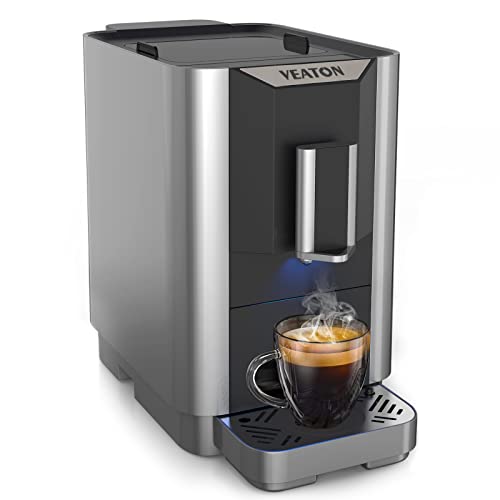10 Professional Espresso Machine Related Projects To Expand Your Creativity

How to Build a Professional Espresso Machine
This is a fantastic option for cafes and coffee shops that wish to attract customers who are passionate about barista and espresso. It's the official machine for World Barista Championships and it really shows.
It also has a reservoir for water to ensure that the barista only requires refilling it throughout their shift. The machine also has steam wands that are cool-touch and a hot water tap for tea.
Water
A commercial espresso machine must be able to create a huge amount of espresso based drinks efficiently. This is why these machines are usually constructed of stainless steel which is more robust and resistant to scratches and breaks. Stainless steel espresso machines also make it easier to maintain and clean.
A good quality machine should include a separate shut-off valve to the water pipe to prevent limescale accumulation. This will ensure any repairs are limited to affected parts of the machine and not affect the operation of the rest.
When choosing your water, make sure to test it and treat it appropriately to ensure the best results. For instance the distilled water can be restored by adding a tiny amount of minerals back into it. This could reduce its anti-erosive properties as well as improve its taste, but it can also damage some machines. This is because the remineralized fluid will cause the boiler sensor to think that the machine is full when it's not. This can cause the machine to overheat and be damaged.
Grinder
The grinder is a crucial component of an espresso machine that is successful. The grinder turns the raw, unground coffee bean into finely-ground coffee that can be tamped properly into the filter basket to ensure an outstanding extraction.
Professional commercial grade machines include grinders that are programmed to accommodate different sizes of drinks. This ensures consistency in results each time. Super-automatic espresso machines take this one step further, implementing automation and programmable the whole process from brewing to grinding to dispensing. These machines are frequently praised in Lab tests for being easy to use.
Semi-automatic and manual machines require more effort from the barista, but the results are worth it. This model won a 2022 Good Housekeeping Coffee Award for its smart dosing feature that weighs and dispensing the right amount of ground coffee every time. It also has a low-pressure pre-infusion system that allows for balanced extraction and the milk frothing wand, which was a success in our test for producing rich, thick steaming milk.
Temperature
The temperature is a crucial element in espresso. If the temperature of the water is not at its ideal degree, it can result in a slower extraction and can even lead to bitter cups.
Fortunately, top-quality espresso machines come with tools that enable you to ensure that your water is at the correct temperature. One way to do this is by utilizing PIDs that monitor and adjusts the temperature of the water. The other way is by using a double boiler system. You can use one boiler to heat water and steam for tea, and use another to heat the water to brewing temperature.
Carles mentions that these types of systems can make the difference for large companies and baristas working at home. They can aid novices dial in the perfect espresso shot because they maintain an exact temperature while avoiding many variables that can affect the flavor profile. It's also much easier for baristas with more experience to get their espressos just how they would like.
Pressure
The pressure an espresso maker uses is another aspect that affects the quality of the coffee it produces. Many espresso drinkers notice that their beverages taste different based on the amount of pressure used, even when all other factors remain the same.
Most commercial machines use 9 bars of pressure in order to make espresso. These machines also tend to be driven by pumps rather than steam-driven. While there are higher-pressure machines, they often require a more intricate group head design that can handle the increased pressure levels.
While some espresso machines advertise 15 or 18 bars of pressure on their machines nine bars are usually considered to be the gold standard when it comes to creating consistently great brews. These machines that are higher pressure are generally more affordable and are designed to be used at home.
To put 9 bar of pressure in perspective, it's over four times the amount of pressure that is exerted by the air inside your car tire. The greater pressure an espresso maker with professional quality can apply, then the better in bringing out the flavor of the coffee beans you love. It is worth investing in top-quality machines that produce the most effective results.

Barista Skills
Baristas must be able to take and process orders from customers quickly and accurately. This is particularly important in busy times in the coffee shop. espresso machine uk are essential for building relationships with customers as well as increasing sales for the coffee shop. This can include recognizing regular customers, working effectively to resolve problems and staying positive and friendly even in the most difficult of situations.
Baristas typically need to be adept at multitasking as they are required to take orders, operate a cash register as well as communicate orders to coworkers, and answer telephone calls all at once. This ability allows customers to enjoy a pleasant experience in the cafe by ensuring that orders are served quickly.
It is essential for baristas to know the different styles of drinks that can be made with an espresso machine. This can be mastered by studying the various types of coffee, attempting them in person, and watching videos on the internet. Many baristas find it helpful to attend classes offered by various organizations.
